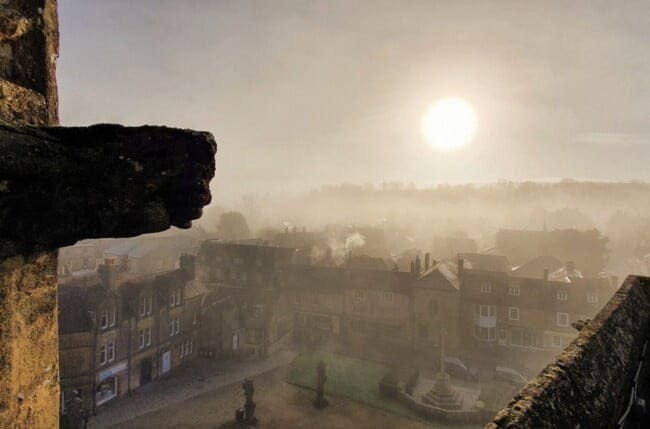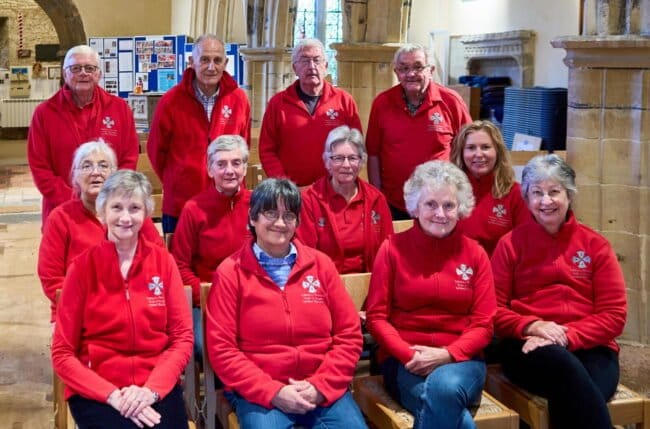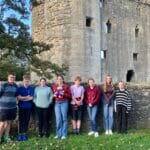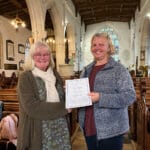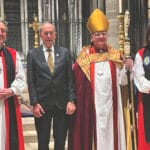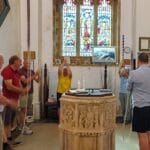In the latest article in the Tower of the Month series, Jack Pease introduces us to the challenging bells of Horningsham in Wiltshire.
Horningsham is one of the prettiest villages in Wiltshire with quaint stone cottages, a mill pond, a village shop, and a historic church set in picturesque rolling hills. Not many, however, are aware of the links with the Marquesses of Bath, who have their seat at the imposing Longleat House at the northern edge of the village, or the church’s ring of six, which in the modern era of restoration and rehanging, are a rare unaltered survivor, featuring a near-complete set of 18th and 19th-century fittings.

The village of Horningsham is an ancient settlement that dates back at least as far as the writing of the Domesday Book in 1086. At that time, the village comprised just five households over 120 acres of land and was owned by Edward the Confessor, the last monarch of the Kingdom of Wessex. The ownership of the village is not well documented, but by the mid-12th century, it came into the hands of the Vernon family, originally from Normandy, headed by Sir Robert de Vernon, Lord of Horningsham.
The Vernon family played a significant role in the village’s history. In 1154, Sir Robert de Vernon founded the village church, which still stands to this day. The church is located on a hill east of the village and offers breathtaking views of the valley towards Longleat and the Stourhead estates. The original 12th-century church was a small, dark, Romanesque structure with few windows, as was common at the time. The church remained largely unchanged until the 1780s when the south wall was demolished and rebuilt in a Neo-Gothic style to match the tower. The height of the main body of the church was increased by four feet, and a new oak roof was constructed two and a half feet higher. Further additions and rebuilding took place in 1810 and 1835, both financed by Lord Bath, who had his seat at Longleat House at the northern edge of the village.
The church tower was rebuilt in the 15th century in the Gothic style, and the church acquired six bells. William Cockey of Frome cast or recast the bells into a ring of six in 1743, with a tenor of approximately 16 cwt in F major, diameter 44 and a quarter inches. According to the inscription on the treble, these bells were the gift of Thomas

Thynne, the 2nd Marquess of Bath. Since then, the bells have only had two major alterations – the recasting of the fourth by Charles and George Mears in 1848 and the rehanging of the bells in 1906 at the expense of Lord Bath.
The bells hang in a large wooden frame and still retain all of their 18th and 19th-century fittings, which include wooden headstocks and plain bearings. They are thus a rare survivor in the Guild of an installation of times gone by.
However, the age of the fittings means all of the bells are unforgiving and unpredictable. All ringing was suspended at Horningsham between 2006 and 2011 as the bells were considered unringable, but following an inspection, they have been rung on limited occasions since. There have only been three full peals on the bells, the last one in 1994, and very few quarter peals.
A trip to Horningsham is a fascinating excursion for anyone interested in history, architecture, and bell-ringing. The village has strong links with the Marquess of Bath, who has financed various renovations to the church and the bells. The church offers excellent views of the surrounding countryside, while the bells themselves offer a unique ringing experience. Although their age and condition make them challenging to ring, they produce a pleasant and almost stately noise. A visit to Horningsham is not for those seeking an easy ride but does offer a glimpse of the past and a chance to experience a rare, historic installation of bells.
Jack Pease



